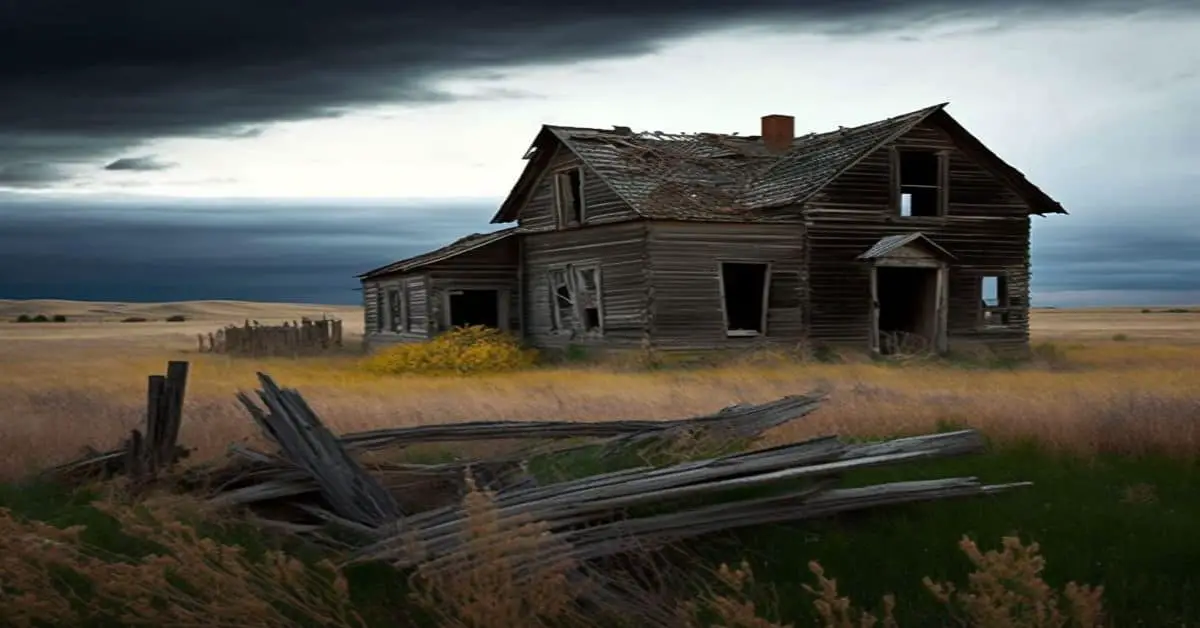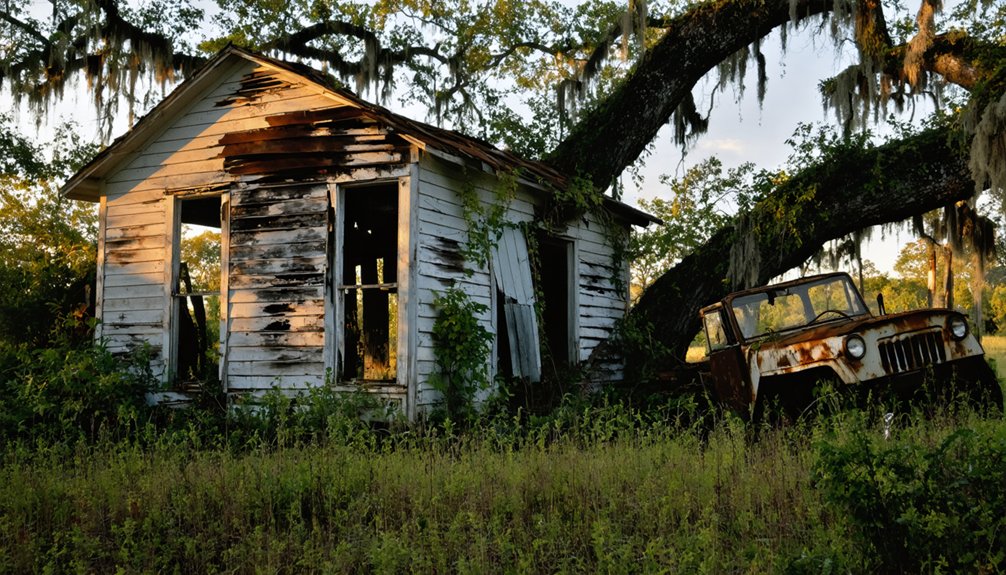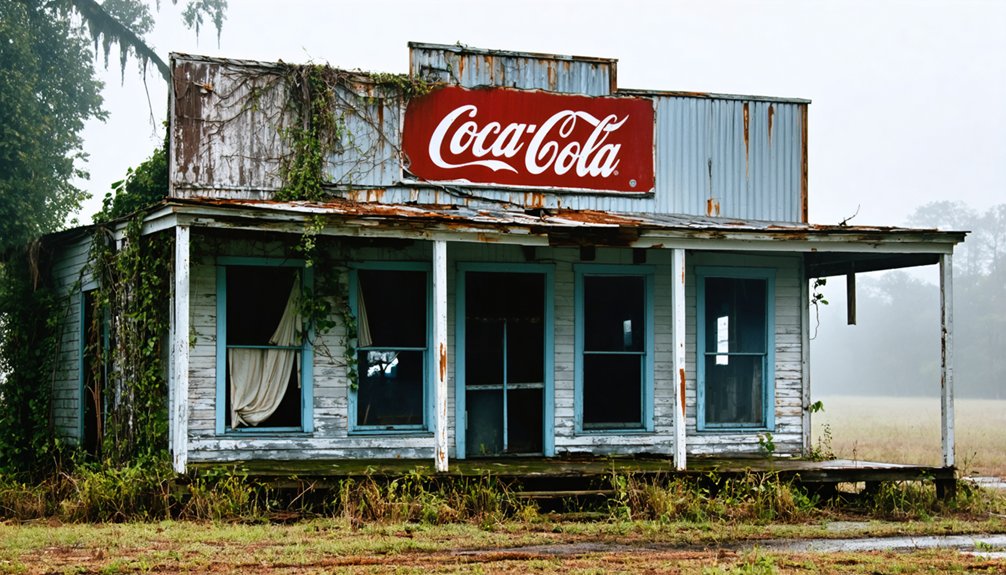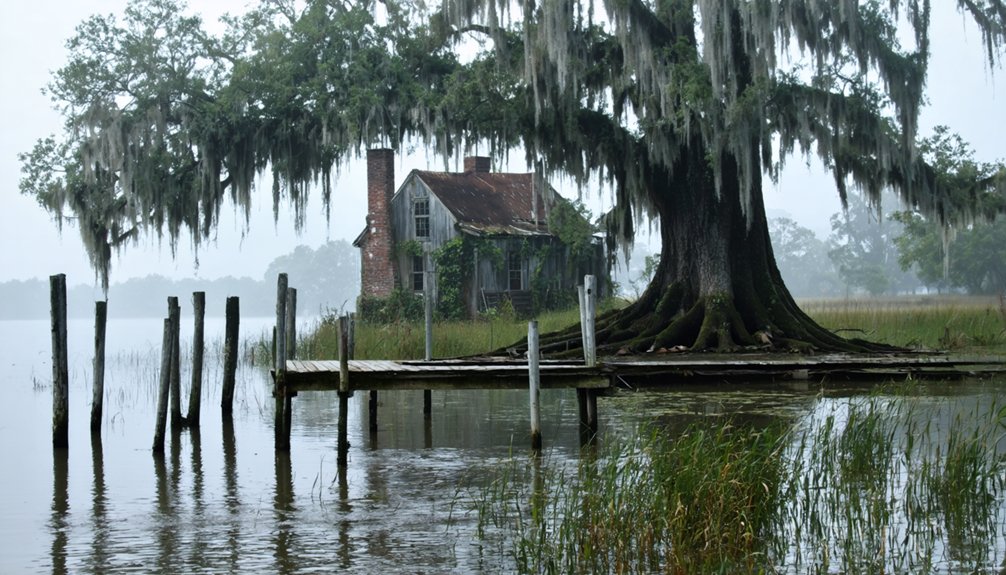Louisiana is one of the southernmost states in the United States. It was named after Louis XIV of France. Most of its land is located in the Gulf of Mexico, and the Mississippi River runs all the way through New Orleans.
There are roughly 52 ghost towns in Louisiana. Most of these former communities were sawmill and lumber towns significantly impacted by natural disasters and economic factors.
Located directly in Hurricane Valley, Louisiana, it has been victim to weather and sea abuse more than 49 times. Still, many villages tried to make Louisiana their home. Some of them were successful at first, but others failed. Joining the Union as the 18th state on April 30, 1812, there is still abundant history to uncover about this location.
Ruddock, Louisiana
Historians estimate that Ruddock was founded by the 19th century, when German colonists made it to Ruddock, looking to start a new life. The weather and environment were not gentle with the newcomers, and most suffered illnesses such as yellow fever, cholera, and malaria. Those who survived dedicated their lives to agriculture and hunting.
In the late 1800s, two men established Ruddock Cypress Company, a lumber mill where only free labor was allowed. William L. Burton, who had been taught timberwork by his father, became one of the sawmill’s founders. In 1887, William met C.H. Ruddock in Baton Rouge.
In 1894, the Ruddock Cypress Company became the second-largest lumber company in Louisiana. By the beginning of the 20th century, Ruddock was a thriving community with almost 1000 residents.
By the end of September 1915, an extreme hurricane hit Ruddock. Buildings, electric, and telecommunications infrastructure collapsed. The storm also destroyed the nearby town of Frenier, which German descendants inhabited. Frenier did not recover from the hurricane and quickly became a ghost town after the railroads were destroyed, crops were lost, and more than 200 people died.
People who understood the dangers of the storm left Ruddock before it hit; those who decided to stay didn’t survive. An urban legend says that Julia Brown, a voodoo priestess, predicted the hurricane. It is said that she claimed the entire town would die the same day she died. And according to an urban legend, Julia was buried right before the hurricane hit and destroyed Ruddock and Frenier.
Nevertheless, since the hurricane, Ruddock has become swampland and an interstate exit. No ruins remain to mark the former town’s location.
Peason, Louisiana
Peason is part of the Sabine parish, which is approximately 60 miles from Alexandria and more than 100 miles from Shreveport.
The name Peason combines the last name of this town’s founders, A.J. Peavy and Riley J. Wilson. The two men combined their knowledge to create a lumber mill in Louisiana. The beginning of the 20th century was a time of economic blooming for Louisiana because railroads were relatively new. There were many uninhabited areas full of pines and cypress trees.
By 1918 the village had a name; the sawmill was installed and ready to operate. Peavy and Wilson helped the town grow to almost 2000 residents in less than ten years. At its peak, the city had a church, schools, and many other structures that secured the well-being of its inhabitants.
Every development in Peason was thanks to the Peavy Wilson Lumber Company. The sawmill was the economic and social base of the town. However, in 1935, the company moved to Florida. Not long after the company moved, the village perished. Many workers moved out of the city to keep working for the company. A few families chose to stay in Peason, but it became an abandoned ghost town.
Torras, Louisiana
Torras was part of the Pointe Coupee parish, which is close to the Mississippi River. It is located 30 miles from New Roads and 7 miles from Lettsworth.
The story of Torras’s beginnings says the first inhabitant was a Spanish immigrant named Joseph Torras. At the age of 25, Joseph decided to move to Louisiana along with his brother. By the mid-1850s, they bought the White Hall Plantation House and established the M & J Torras firm.
According to a newspaper article, in 1870, the US House of Senate granted Joseph an exclusive privilege to develop a railroad in the parish. At the time, Joseph was 50 years old. The town expected extensive development because it had access to the river and many railroads.
After the community was overtaken by the river two times, it became a ghost town. The first happened in 1912 when the Mississippi River flooded the parish, leaving thousands without homes.
The last flood occurred 15 years later when the Mississippi River flooded Arkansas, Mississippi, and Louisiana. There are no ruins of the city that it once was.
Cheniere Caminada, Louisiana
Cheniere Caminada is a coastal town in the Gulf of Mexico. It is 70 miles from Houma and around 100 miles from Jefferson and New Orleans.
The founders of this town remain unknown. However, some sources point out that the first inhabitants of this land could have been German, Prussian, and Spanish descendants. Later, Italians and French moved into the village.
The economy of Cheniere Caminada was mainly based on fishing and agriculture. People caught fish, oysters, shrimp, and crabs to sell in New Orleans. Some of the crops people harvested were oranges and sugar cane.
Cheniere became a ghost town due to a natural disaster. It was October 1893; people still remember the Great October Storm. A category four hurricane hit Cheniere Caminada, destroying the entire community in six days. More than 2000 people died by the time damage could be evaluated. The event is still one of the deadliest hurricanes in US history.
Some people tried to make Cheniere Caminada the town it once was, but hurricanes continued to cause damage to the land and standing structures. You can visit the village and find ruins of what it used to be.



